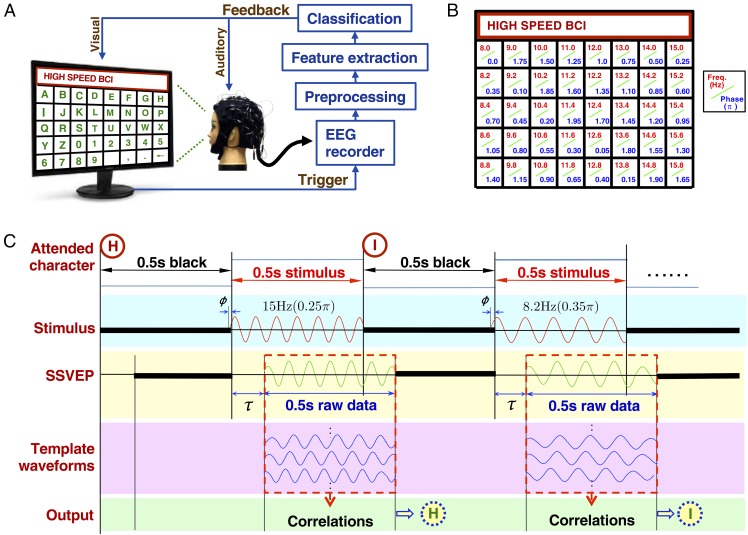Fig. 1.
Closed-loop system design of the SSVEP-based BCI speller. (A) System diagram of the BCI speller, which consists of four main procedures: visual stimulation, EEG recording, real-time data processing, and feedback presentation. The 5 × 8 stimulation matrix includes the 26 letters of the English alphabet, 10 numbers, and 4 symbols (i.e., space, comma, period, and backspace). Real-time data analysis recognizes the attended target character through preprocessing, feature extraction, and classification. The image of the stimulation matrix was only for illustration. Parameters of the stimulation matrix can be found in Materials and Methods. (B) Frequency and phase values used for encoding each character in the stimulation matrix. These values are determined by the joint frequency-phase modulation method (Eq. 4). The frequencies range from 8.0 to 15.8 Hz with an interval of 0.2 Hz. The phase interval between two neighboring frequencies is 0.35π. (C) Examples of spelling characters “H” (15.0 Hz, 0.25π) and “I” (8.2 Hz, 0.35π) with the BCI speller. An intertrial interval of 0.5 s is used for directing gaze to a target before the stimulation matrix starts to flash for 0.5 s. The 0.5-s-long EEG epoch with a delay of (∼140 ms) to the stimulation is extracted for target identification. The target character can be determined by the decoding algorithm based on the correlations between the single-trial SSVEP and individual SSVEP templates (details are given in Materials and Methods).

